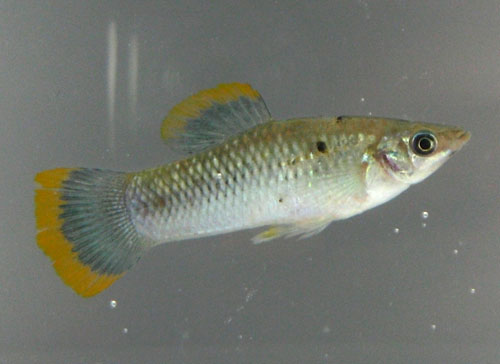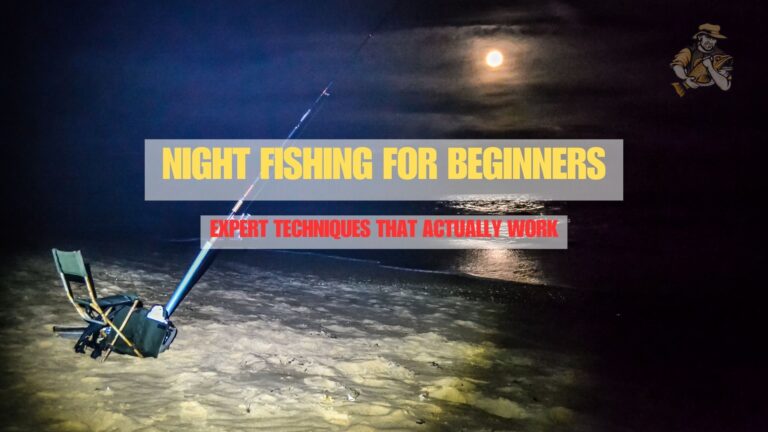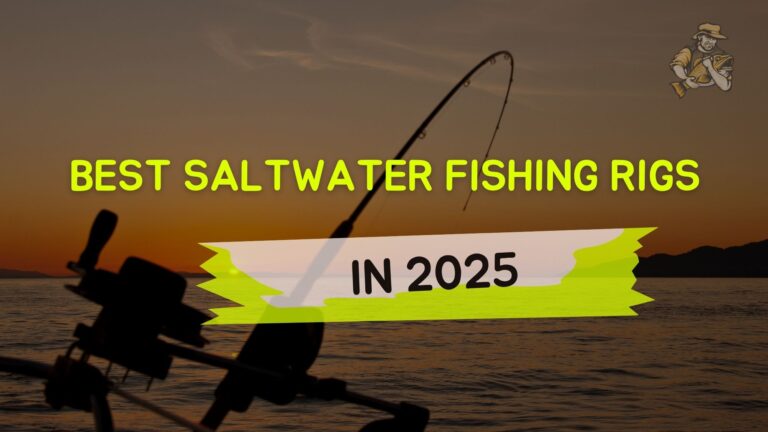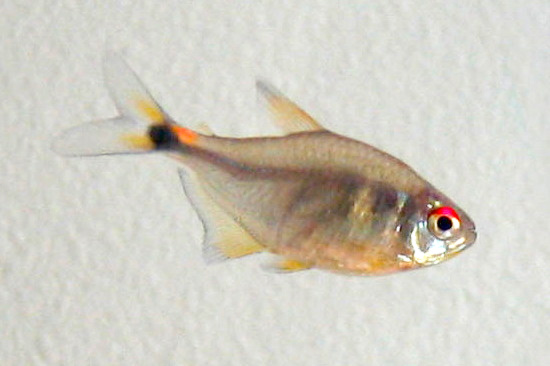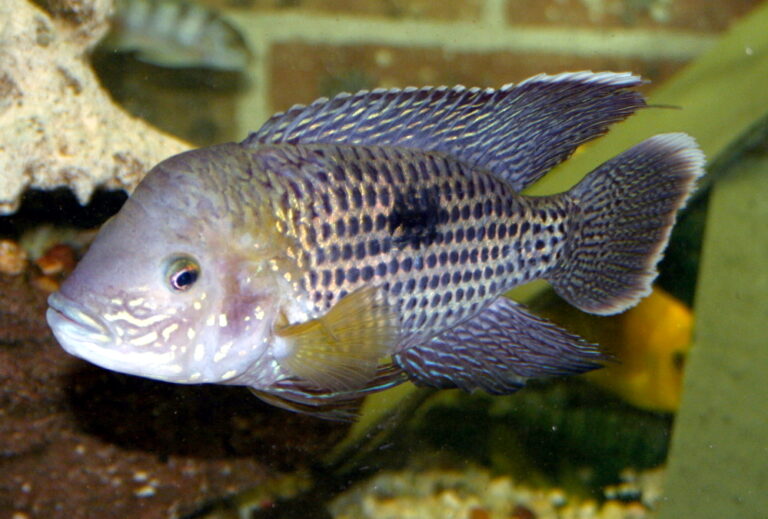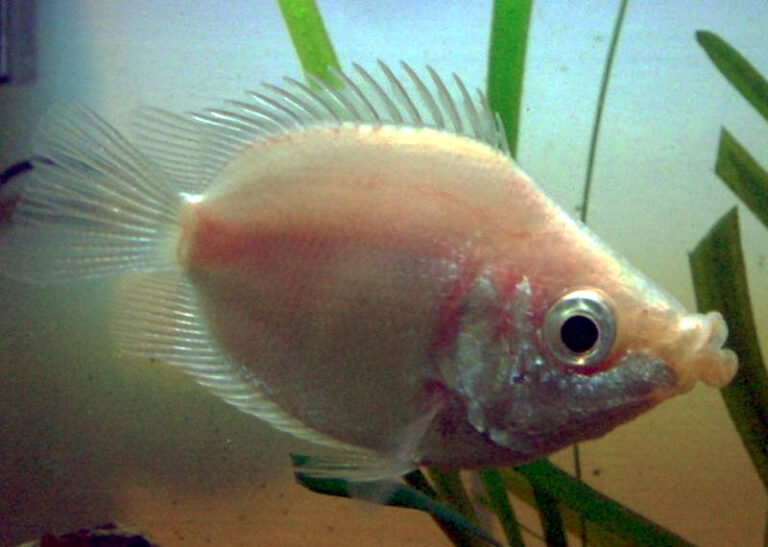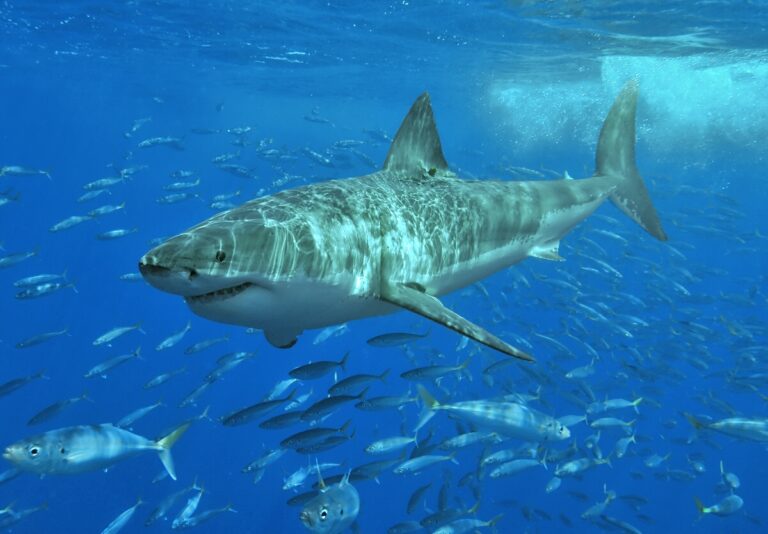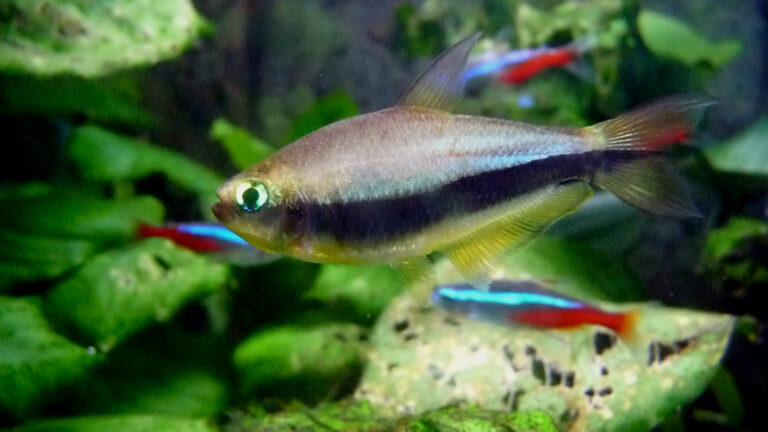Chinook Salmon: Essential Guide for Catching Kings
By Adam Hawthorne | Last Modified: May 4, 2025
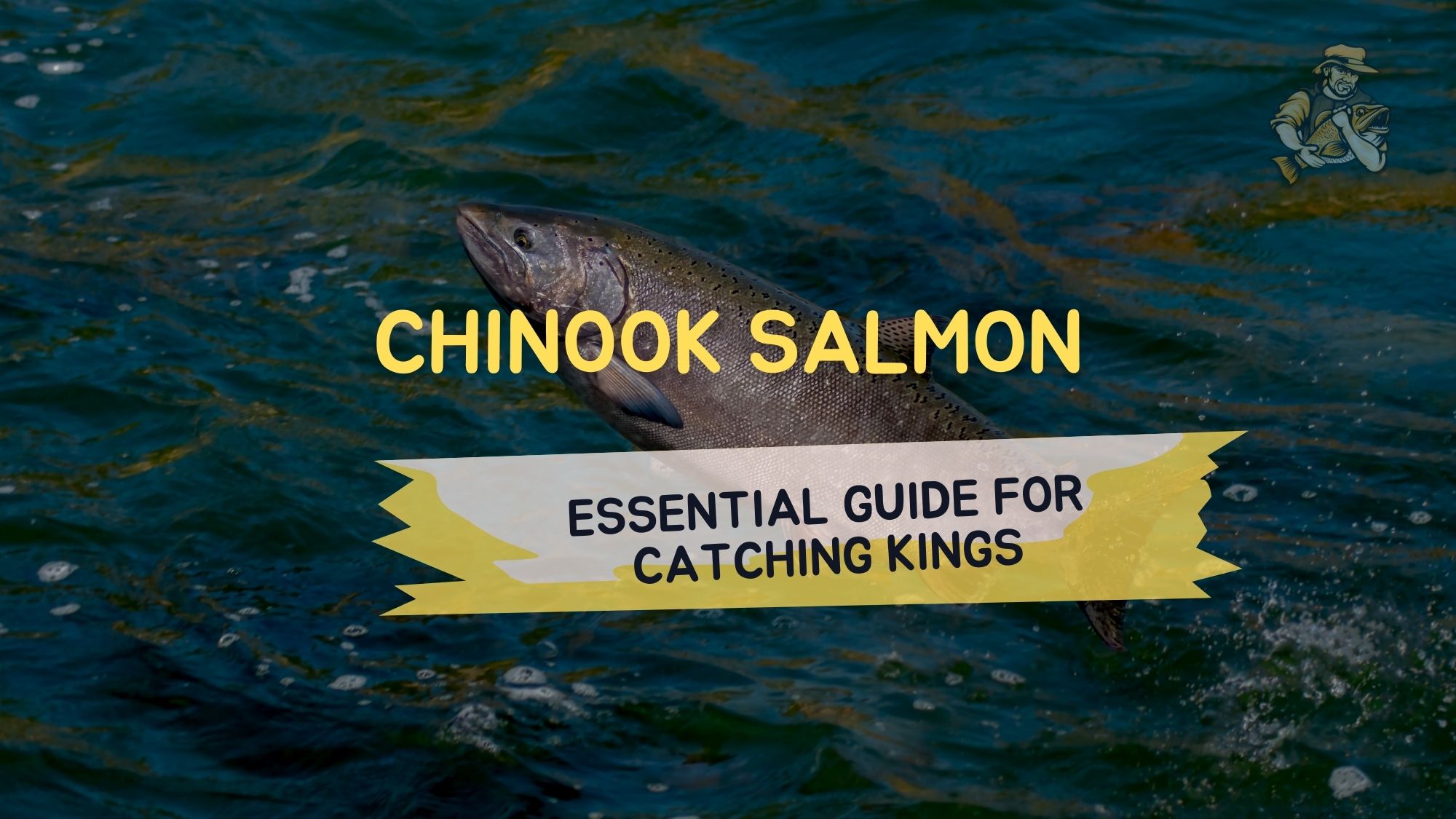
There’s something almost magical about the moment when a Chinook salmon takes your lure. That heart-stopping tug, followed by a run that can strip yards of line in seconds. I still remember my first king salmon – a 22-pounder that nearly pulled me into Michigan’s Pere Marquette River at dawn. After 30 minutes of what felt like wrestling a submarine, I finally brought it to net. My hands were shaking so badly I could barely hold the fish for a photo.
Chinook salmon (Oncorhynchus tshawytscha) – also called king salmon for good reason – are the largest of the Pacific salmon species and offer some of the most thrilling fishing experiences in North America. Whether you’re targeting them in the Great Lakes or their native Pacific waters, these powerful fish require specific techniques, gear, and knowledge to catch consistently.
Chinook Salmon Basics Every Angler Should Know
Chinook salmon aren’t just big – they’re complex creatures with fascinating life cycles and behaviors that directly impact how you should fish for them. Understanding these kings of the salmon world means better chances of landing one.
Native to the North Pacific Ocean and its tributaries, Chinook were successfully introduced to the Great Lakes in the 1960s to control invasive alewife populations. They’ve since become a prized sportfish throughout the region, with some Great Lakes kings growing to impressive sizes despite not being in their native range.
Adult Chinooks typically weigh between 10-50 pounds, with some monsters exceeding 70-80 pounds in Alaska and British Columbia. Their size varies dramatically depending on habitat, with Great Lakes fish typically smaller than their Pacific counterparts. According to research from the Michigan Department of Natural Resources, Great Lakes Chinook average 15-25 pounds at maturity.
What sets Chinook apart from other salmon species? For one, their distinctive dark gum line – check inside the lower jaw and you’ll see black coloration that helps identify them from similar-looking coho salmon. Their spotted tail and black mouth are other key identifiers.
During my Alaska trip back in 2023, our guide pointed out how Chinooks also have a more torpedo-shaped body than other salmon, with a more pointed head and sleeker profile. This design makes them incredible fighters – something I’ve learned the hard way after losing several big kings when they made blistering runs back to deep water.
Life Cycle and Seasonal Movements
Understanding the Chinook’s life cycle is crucial for targeting them effectively. These salmon are anadromous, meaning they’re born in freshwater, migrate to the ocean (or large lakes) to grow, then return to their birth streams to spawn and die.
The typical life cycle runs 3-7 years, with variation depending on the specific population. When spawning season approaches (primarily fall, but some runs occur in spring and summer), adult Chinook stop feeding and focus entirely on reproduction. Their silver bodies transform dramatically, often developing a reddish hue and pronounced kype (hooked jaw) in males.
Great Lakes Chinooks follow a similar pattern, though they remain in the lakes rather than oceans during their growth phase. They typically begin their spawning runs in late July through October, with peak activity in September in most tributaries.
I’ve tracked these runs for years on Lake Michigan tributaries, and I’ve noticed patterns changing subtly. Ten years ago, we could count on the Pere Marquette run peaking around September 15th. Lately, I’ve seen peak activity shifting about a week later – something to keep in mind if you’re planning a trip.
Conservation Status and Regulations
Wild Chinook populations face significant challenges in their native range. According to NOAA Fisheries, several runs of Chinook salmon are listed as threatened or endangered under the Endangered Species Act. Factors including habitat loss, dam construction, climate change, and overfishing have all contributed to population declines.
In the Great Lakes, Chinook are primarily maintained through stocking programs, though some natural reproduction occurs in certain tributaries. The Great Lakes Fishery Commission coordinates management efforts across state and provincial boundaries.
Fishing regulations vary significantly by location, season, and population status. Always check current regulations before fishing, as limits, seasons, and even tackle restrictions can change annually based on population assessments.
Last season, I nearly got a ticket on a small Lake Michigan tributary because regulations had changed from the previous year. The daily bag limit had been reduced from three fish to one. Thankfully, I only had one fish – but the conservation officer mentioned several anglers had been cited that week. Not worth the risk.
Essential Gear for Targeting Chinook Salmon
If there’s one thing I’ve learned through decades of salmon fishing, it’s that using the right gear makes all the difference. Chinooks are powerful fish that will exploit any weakness in your setup.
Rods and Reels for Different Environments
For Great Lakes trolling (the most common approach), I use medium-heavy to heavy action rods in the 8-9 foot range. My primary setup is a 9-foot St. Croix Triumph paired with a Shimano Tekota line counter reel. The length helps absorb the powerful head shakes Chinooks are known for.
When river fishing, I prefer something with a bit more backbone – usually a 9-10 foot medium-heavy rod with fast action. This provides better control when fighting fish in current and around obstacles. This past fall, I switched to a Fenwick HMG in the 9’6″ length and was impressed with how it handled a 23-pound buck in heavy current.
For reels, line counter models are practically essential for trolling, as precise depth control often makes the difference between limits and skunks. When fishing rivers, I prefer baitcasting reels with good drag systems – the Abu Garcia Ambassadeur series has served me well for years.
Researchers from Michigan State University’s Fisheries Department found that proper drag settings are critical when fighting Chinook – too tight and you risk line breaks, too loose and hook sets may fail. I typically set my drag to about 25-30% of my line’s breaking strength.
Line and Leader Considerations
Line choice depends greatly on your fishing method and conditions:
- For trolling open water: 20-30 pound test braided main line with a 15-20 pound fluorocarbon leader
- For river fishing: 15-20 pound monofilament or 30-40 pound braid with 12-15 pound fluorocarbon leader
- For clear water conditions: Lighter leaders (10-12 pound) may generate more strikes but increase break-offs
I’ve experimented extensively with leader length. In clear water, I’ve had better success with longer 5-7 foot leaders. In stained water, 2-3 feet seems to work fine. This matches findings from a study by the University of Washington’s School of Aquatic and Fishery Sciences, which demonstrated that salmon in clear water are more leader-shy than those in turbid conditions.
One mistake I made for years was not changing my leaders often enough. Salmon have abrasive mouths that can quickly wear through fluorocarbon. Now I check my leader after every fish and change it at the first sign of fraying.
Essential Terminal Tackle
Having the right terminal tackle can dramatically increase your success rates:
- Trolling flashers/dodgers: 8-11 inch models create flash and vibration
- Spoons: J-plugs, Coyote spoons, and Michigan Stingers in 3.5-5 inch sizes
- Cut-bait rigs: Particularly effective when trolling with herring or anchovy strips
- River fishing: Yarn flies, egg patterns, and wobbling plugs like Kwikfish or FlatFish
Color preferences seem to vary by region and conditions. In the Great Lakes, green, blue, and purple patterns often outperform in clear water, while chartreuse, orange, and glow finishes excel in stained water or low light.
During a guided trip on Lake Ontario, I was skeptical when our captain put out mostly glow spoons before sunrise. But we boated three kings before the sun cleared the horizon. I’ve been a believer ever since – I now always include glow patterns in low light conditions.
Top Techniques for Catching Chinook Salmon
Success with Chinook comes down to presentation, location, and timing. Here are the most effective approaches I’ve found over three decades of targeting these magnificent fish.
Trolling Tactics That Consistently Produce
Trolling is by far the most productive method for open water Chinook fishing. The key aspects to master include:
Depth Control: Chinooks often suspend at specific depths related to temperature and baitfish. Using downriggers, dipsy divers, or lead core line to hit precise depths is crucial. According to research from Cornell University, king salmon typically prefer water temperatures between 46-58°F (8-14°C).
I track my successful depths and temperatures religiously in a fishing journal. Last summer on Lake Michigan, we found that kings were consistently holding in 53-degree water. Once we located that temperature band each morning, we could reliably find fish regardless of actual depth.
Speed Adjustments: Trolling speed can make or break your day. I typically start around 2.3-2.7 mph (GPS speed) and adjust based on fish response. Sometimes a faster presentation triggers reaction strikes, while other days a slower crawl is needed.
Trolling Patterns: Rather than just dragging lures in straight lines, implemented S-curves and occasional speed bursts can trigger strikes from following fish. This technique mimics the erratic movement of injured baitfish.
One early September morning on Lake Superior, we’d been trolling for hours with only one hit. Out of frustration, I made a sharp 90-degree turn to avoid crossing lines with another boat. As we turned, three rods went off simultaneously! We started incorporating regular sharp turns after that, with noticeable improvements in our catch rate.
River Fishing Approaches
When Chinooks enter rivers to spawn, different techniques come into play:
Drift Fishing: Using a float (bobber) to suspend eggs, yarn, or beads at the right depth as you drift through holds and runs. This natural presentation is deadly on pressured fish.
Back-Bouncing: Particularly effective in deeper holes, this technique keeps your bait near bottom as you work downstream through likely holding spots.
Casting Spoons and Spinners: In larger rivers with good visibility, casting hardware can be highly effective, especially for fresh, aggressive fish.
The Oregon Department of Fish and Wildlife recommends focusing on river sections with moderate current and good structure – the heads and tails of pools, behind large boulders, and along current seams. These areas provide resting spots for migrating salmon.
I’ve found that river Chinooks often bite best during low light conditions – dawn and dusk typically produce the most action. During a memorable trip to Michigan’s Manistee River in 2022, we landed six kings between 6:30-8:30 AM, then nothing for the next five hours as bright sunlight penetrated the clear water.
Seasonal Patterns and Timing
Success with Chinooks requires understanding their seasonal movements:
Spring: In the Pacific, focus on nearshore areas where kings feed on herring and other baitfish. In the Great Lakes, look for pre-spawn fish staging near river mouths.
Summer: Open water trolling becomes most effective, with fish typically following bait schools and temperature preferences. Focus on thermoclines and structure that concentrates baitfish.
Fall: Spawning runs begin, with fish moving into rivers. This is prime time for both river fishing and targeting staging fish near river mouths.
Winter: In Pacific regions, winter Chinook (often called blackmouth or feeder kings) can be targeted in protected marine areas, though they’re typically smaller than summer run fish.
During a trip to Neah Bay, Washington several years back, we found winter kings by focusing on tidal rips where currents concentrated baitfish. These winter feeders were smaller (8-15 pounds) but fought with surprising vigor and tasted fantastic.
Regional Chinook Hotspots Worth Exploring
While Chinooks have been introduced to waters worldwide, these regions offer exceptional opportunities:
Pacific Northwest and Alaska
The native range of Chinook salmon offers world-class fishing opportunities:
- Columbia River: The massive Columbia system hosts several distinct runs of Chinook, with spring, summer, and fall opportunities.
- Kenai River, Alaska: Home to monster kings, including the world record 97-pound Chinook caught in 1985. The Alaska Department of Fish and Game manages these fisheries carefully.
- Sacramento River, California: Despite population challenges, this historic Chinook fishery still produces quality fish when conditions align.
Great Lakes Region
The introduced Great Lakes population offers accessible king salmon fishing for many anglers:
- Lake Michigan: Ports like Ludington, Michigan and Algoma, Wisconsin consistently produce excellent catches.
- Lake Ontario: Oswego and the Salmon River in New York offer world-class fishing, especially during fall runs.
- Lake Superior: While less known for salmon than its southern cousins, the north shore tributaries can offer less pressured fishing.
I’ve fished most of these locations over the years, and each has its unique character. The sheer wildness of Alaska’s rivers contrasts sharply with the more accessible but often more crowded Great Lakes tributaries. If I had to pick a favorite, the combination of size and scenery on the Kenai River puts it at the top of my list – but the convenience of having Lake Michigan’s kings just an hour from my home gives them a special place in my heart.
My buddy Steve swears by the Salmon River in New York – he makes an annual pilgrimage each October. Last year he sent me photos of shoulder-to-shoulder combat fishing that honestly looked more stressful than fun. Different strokes, I guess.
Common Mistakes to Avoid When Targeting Kings
Over decades of chasing Chinooks, I’ve made plenty of mistakes. Learn from mine instead of making your own:
Not Checking Equipment Thoroughly
Chinooks will find any weakness in your gear. Before each trip, I thoroughly inspect:
- Line and Leaders: Check for frays, abrasions, or weak spots
- Drag Systems: Ensure smooth operation under pressure
- Hook Sharpness: Dull hooks are a leading cause of lost fish
- Rod Guides: Inspect for cracks or rough spots that could cut line
One September morning on the Pere Marquette, I hooked what was easily a 30+ pound Chinook. After a blistering initial run, my line suddenly went slack. Upon reeling in, I found my leader had frayed against a rod guide that had developed a tiny crack. A simple equipment check would have prevented losing the fish of a lifetime.
Poor Fish Fighting Techniques
Fighting Chinooks effectively requires patience and technique:
- Avoid High Sticking: Keep your rod at a 45-degree angle to absorb runs
- Maintain Pressure: Keep constant tension to prevent hook dislodgement
- Use the Current: In rivers, use current to your advantage rather than fighting against it
- Be Patient: Rushing the landing often results in lost fish
Research from British Columbia’s Fisheries Department suggests that most salmon are lost in the final moments of the fight when anglers get impatient or excited.
Ignoring Water Temperature
Water temperature is perhaps the most critical factor in locating Chinooks. Using a quality temperature probe or fish finder with temperature reading can make the difference between success and failure.
The sweet spot is typically between 46-58°F (8-14°C), though this can vary seasonally. In summer months, this often means fishing deeper water or focusing on early morning and evening when surface temperatures are cooler.
Last July, we were struggling to find fish on Lake Michigan until we located a subtle temperature break where the reading dropped from 67°F to 55°F over just a quarter mile. We set lines along this break and limited out in two hours. Without careful temperature monitoring, we’d have completely missed this productive zone.
Preparing and Cooking Your Catch
Few things are more satisfying than enjoying a meal of fresh salmon that you caught yourself. Chinooks offer excellent table fare when properly handled.
Proper Fish Handling for Best Results
To ensure the best eating quality:
- Bleed Immediately: Cut the gills or make a cut under the throat to allow the fish to bleed out
- Keep Cool: Get the fish on ice as quickly as possible
- Clean Promptly: Remove viscera and rinse with cold water
- Consider Brining: A simple brine solution can enhance flavor and texture
According to seafood researchers at Oregon State University, the quality of salmon meat begins to deteriorate immediately after death, so proper handling is essential for premium table fare.
I always bring a cooler full of ice when salmon fishing, even in cool weather. The difference in flavor between a properly iced fish and one that sits in warm weather for hours is remarkable.
Favorite Chinook Salmon Recipes
Chinook’s rich, oil-rich flesh makes it versatile for cooking:
- Cedar Plank Grilling: My all-time favorite method, the cedar imparts a subtle smokiness
- Simple Pan Searing: With just butter, salt, and herbs
- Smoking: Cold or hot smoking works beautifully with Chinook
- Gravlax: Cured with salt, sugar, and dill for an impressive appetizer
My family’s favorite is a simple preparation: salmon fillets rubbed with brown sugar, salt, and a touch of cayenne, then grilled over charcoal. Sometimes the simplest methods let the flavor of fresh-caught king shine through best.
FAQ: Common Questions About Chinook Salmon Fishing
What’s the best time of year to catch Chinook salmon?
The optimal timing depends on your location. In the Pacific Northwest and Alaska, summer months (June-August) typically offer excellent offshore opportunities, while fall (September-October) is prime for river fishing during spawning runs. In the Great Lakes, peak fishing typically runs from July through September, with river runs usually strongest in September and early October. The Pacific Fishery Management Council publishes detailed run timing forecasts each season.
How can I tell a Chinook salmon from other salmon species?
Chinooks have several distinctive features: black gums along their lower jaw (hence the nickname “blackmouth”), black spots on their back and both lobes of their tail, and a torpedo-shaped body. They’re typically larger than coho salmon, with adults commonly weighing 10-50 pounds. In spawning colors, male Chinooks develop a pronounced hooked jaw (kype) and often turn a duller, darker color than the bright red of sockeye salmon.
Do Chinook salmon bite during spawning runs?
Yes, but their behavior changes dramatically. As they enter freshwater to spawn, Chinooks gradually stop actively feeding. Early in the run, they may strike lures out of aggression or habit. Later, as spawning urges intensify, they become less interested in feeding but may still strike presentations out of territorial instinct. This is why egg imitations, yarn flies, and wobbling plugs often outperform traditional baitfish imitations during spawning runs.
What are the best lures for Chinook salmon?
In open water, spoons (3.5-5 inches) in colors that match local baitfish are consistently productive. Popular choices include J-plugs, Coyote spoons, and Michigan Stingers. Cut-bait rigs with herring or anchovy strips are extremely effective, particularly in the Pacific. For river fishing, Kwikfish/FlatFish plugs (often wrapped with sardine fillets), egg clusters (real or imitation), and yarn flies in various colors all have their moments. According to a survey by Sport Fishing Magazine, the most consistent producers across all regions are glow-in-the-dark spoons fished at dawn or dusk.
How deep should I fish for Chinook salmon?
This varies tremendously based on season, water temperature, and location. Chinooks typically prefer water temperatures between 46-58°F (8-14°C). In summer, this often means fishing deeper – frequently 60-120 feet in the Great Lakes. During spring and fall, they may be much shallower, sometimes as little as 10-30 feet down. Using downriggers with probe temperature sensors is the most reliable way to locate the optimal depth on any given day.
Final Thoughts
Chinook salmon fishing represents one of North America’s premier angling experiences. Whether you’re trolling the vastness of Lake Michigan, casting in the mighty Columbia, or drifting a fly in an Alaskan stream, these magnificent fish will test your skill, equipment, and patience.
I’ve been fortunate to pursue kings from California to Alaska, and from New York to Michigan. Each region offers its own unique character and challenges. But that moment when a chrome-bright Chinook crashes your lure and makes that first blistering run? That’s universal magic that keeps anglers coming back year after year.
The conservation challenges facing wild Chinook populations remind us to treat these fish with respect – practicing proper catch and release techniques when appropriate and always following local regulations. With proper management, future generations can experience the thrill of connecting with these remarkable fish.
What’s your experience with Chinook salmon? Have you developed techniques or discovered spots that consistently produce? I’d love to hear your stories and questions in the comments below.

Meet Adam Hawthorne
I’m a lifelong fishing enthusiast who’s spent years exploring rivers, lakes, and oceans with a rod in hand. At Fishing Titan, I share hands-on tips, honest gear reviews, and everything I’ve learned about fish and ocean life, so you can fish smarter and enjoy every cast.
Share:

Meet Adam Hawthorne
I’m a lifelong fishing enthusiast who’s spent years exploring rivers, lakes, and oceans with a rod in hand. At Fishing Titan, I share hands-on tips, honest gear reviews, and everything I’ve learned about fish and ocean life, so you can fish smarter and enjoy every cast.
Related Articles
-
Gold Dust Molly
The Gold Dust Molly (*Poecilia sphenops*) represents one of the most popular and visually striking freshwater aquarium fish available to enthusiasts worldwide. This vibrant livebearing…
-
Night Fishing for Beginners: Expert Techniques That Actually Work
My first night fishing trip was an absolute disaster. Picture this – fifteen-year-old me, armed with a rusty flashlight and my grandfather’s ancient tackle box,…
-
Best Saltwater Fishing Rigs in 2025
As someone who’s spent over three decades casting lines into just about every body of water I could find, I can tell you this –…
-
Head and Tail Light Tetra
The Head and Tail Light Tetra (*Hemigrammus ocellifer*) stands as one of South America’s most distinctive characin species, instantly recognizable by the luminous spots that…
Fish Species
-
Green Terror Cichlid
The Green Terror Cichlid stands as one of South America’s most formidable and visually striking freshwater fish species, commanding respect from aquarists and marine biologists…
-
Kissing Gourami
The Kissing Gourami (*Helostoma temminckii*) stands as one of the most distinctive and recognizable freshwater fish species in both aquarium hobby and natural ecosystems. This…
-
Great White Shark
The Great White Shark (*Carcharodon carcharias*) stands as one of the ocean’s most formidable apex predators, commanding respect and fascination across marine ecosystems worldwide. This…
-
Emperor Tetra
The Emperor Tetra (*Nematobrycon palmeri*) stands as one of the most distinctive and sought-after freshwater fish species in the aquarium trade, renowned for its striking…

